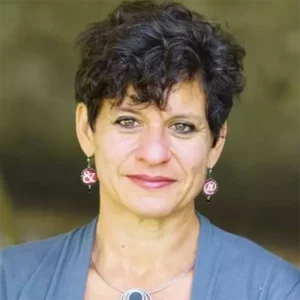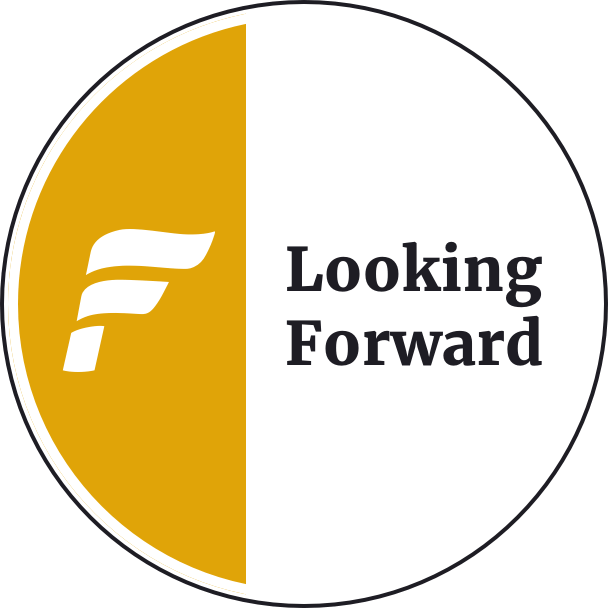What would Judy do? 100 years after first bat mitzvah, a meditation on female firsthood

Graphic by Angelie Zaslavsky
This is an adaptation of Looking Forward, a weekly email from our editor-in-chief sent on Friday afternoons. Sign up here to get the Forward’s free newsletters delivered to your inbox. Download and print our free magazine of stories to savor over Shabbat and Sunday.
A news release that hit my inbox late Thursday afternoon made me chuckle: “First Female Rabbi to Chair Key Israel Bonds Council,” the subject line announced.
I’d never heard of Rabbi Rosie Haim, but the release says she is a “passionate, dynamic leader” who has served Cleveland’s Jewish community for more than 30 years. I did not even know that Israel bonds had a Rabbinic Advisory Council, never mind a glass ceiling ripe for breakage.
But I’d been thinking a lot about female firsthood in this Women’s History Month, when American Jewish groups have been aflutter about both the 100th anniversary of the first bat mitzvah and the 50th of the first ordination of women as rabbis.
I’d been thinking that the era of female firsthood might be nearing a close, that my daughter and her friends have far fewer frontiers to conquer, and about exactly what it takes to be the first person of a certain type to do a certain type of thing.
Sandy Sasso decided she wanted to be a rabbi when she was 16, though she kept her dream secret — it was 1963. Young Sandy considered studying comparative religion instead, or teaching, “but it kept coming back to me,” she said.
“I did resist it over time — who am I? I’m not really rebellious, maybe I ought to find something else,” Sasso told me. She ended up in the first co-ed class at the Reconstructionist Rabbinical College, became half of the “first practicing rabbinic couple in world Jewish history” when she graduated in 1974, and was the first American rabbi to give birth.
“I didn’t think much about being first or second or third of fourth,” she said. “This was just something I had to do.”
Get the Forward delivered to your inbox. Sign up here to receive our essential morning briefing of American Jewish news and conversation, the afternoon’s top headlines and best reads, and a weekly letter from our editor-in-chief.
I’d called Rabbi Sasso because she wrote a children’s book about that very first bat mitzvah, “Judy Led the Way.” Turns out Sasso is finishing her 25th children’s book — the latest is about the first woman rabbi in the U.S., Sally Priesand.
Turns out she personally knew “Judy” — Judith Kaplan Eisenstein, eldest daughter of Reconstructionism’s founder and a new Instagram star thanks to the innovative celebration of this 100th anniversary by her Upper West Side synagogue, the Society for the Advancement of Judaism, known as SAJ.
What I love about Sasso’s “Judy” book is its focus on questions. Papa, why can’t there be more music in the synagogue? Why don’t women read the Torah? Do I have to believe in God? Why do I have to stop biting my nails? What if the men tell me to sit in the back? What if the women think I’m showing off? What if something goes wrong?
“Freedom to ask questions, that was very much a part of Judith’s household,” Sasso explained. “I wanted young people to understand that they could ask hard questions, that that was part of Jewish living.”
Amen. Questions are the agents of change, the foundation of firsthood. What if? Why not? If not me, who? If not now, when?

An illustration from Sandy Sasso’s book, “Judy Led the Way,” about Judith Kaplan’s bat mitzvah in 1922. Courtesy of Sandy Sasso
Judy Kaplan was thrust into firsthood by her father, Mordecai Kaplan. According to the Instagram, they took long walks around the reservoir in Central Park and to the main branch of the New York Public Library, where he made her summarize the books she read (Edith Wharton’s “The Age of Innocence,” for example).
The bat mitzvah came shortly after Kaplan founded SAJ. Judy did not read from the Torah, but read biblical passages from a book after the Torah service had concluded. There was certainly no big dance party, no avalanche of gifts, no swag with a custom “Judy’s Bat Mitzvah” logo.
“The only reference to it is a small entry in Mordecai Kaplan’s diary, which says, ‘Oh, my daughter’s going to become a bat mitzvah, more about this later,’ and he never wrote more about it,” Rabbi Sasso told me. “That afternoon of her bat mitzvah, he went to teach in another synagogue.”
And if Judy was a pioneer, she was not exactly a trend-setter. Congregation Beth-El Zedeck in Indianapolis, where Sasso and her husband have worked since 1977, had its first bat mitzvah in 1951. Many synagogues had lower-key ceremonies, often on Friday nights, for girls well into the 1980s.
“When I was 12, 12-and-a-half, I said to my parents, ‘Am I having a bat mitzvah?’ and they said, ‘Nah, it’s not really necessary,” Sasso recalled. “My brother, five years later, he had a bar mitzvah.”
At 16, when she had started to teach Hebrew to younger children, she did read from the Torah. There was no special ceremony, no gifts; she does not remember the parsha. “There was no lightning, no thunder, when I came up to the Torah to read,” Sasso said.
And that’s how change happens.

Judith Kaplan reading from the Torah on the 70th anniversary of her bat mitzvah, in 1992. Courtesy of Eisenstein Reconstructionist Archives
My own bat mitzvah was a bit like Judy Kaplan’s. I did not touch a Torah scroll, did not chant a Torah portion — these things were not available to girls in the Orthodox synagogue in Newton, Massachusetts, where I grew up.
Instead, I chanted a haftarah — it was on Hanukkah, Dec. 3, 1983, so Zechariah — though without the blessings before and after, and gave a d’var torah about its signature line, “Not by might and not by power, but by my spirt, said the Lord.”
I was not allowed to do this during Shabbat morning services, when it “counted”; instead, we created a special havdalah service on Saturday evening. It was not even called a “bat mitzvah,” but a “bat torah.”
There was a fabulous dance party afterward and an avalanche of gifts, though no swag.
My dad recently disabused me of the notion that my oldest sister was the first in our community to have such a bat torah. I was the very first female president of New England Region United Synagogue Youth, which seemed like a very big deal at the time (1987), and I’m fairly certain I was also the first female editor-in-chief of my high school newspaper, The Newtonite.
But I was the second woman to be Jerusalem bureau chief of The New York Times, more than a decade after Deborah Sontag. Here at the Forward, I followed another female editor-in-chief, Jane Eisner, and together, we’re 50% of the four EICs since the Forward began in English, so not a big deal at all.
I stand on the shoulders of Jane and Deborah and, yes, Judy, and so many other feminist pioneers who asked “what if” and “why not me”?
When I told my 14-year-old daughter, Shayna, the subject of today’s column, she shrugged. Female firsthood is not something she thinks much about. “Sadly,” she said sarcastically, “there are a lot of super cool women who came before me to do stuff.”
Well, Shayna, cross the Israel Bonds Rabbinic Advisory Council off your list. There’s still the White House.
Your Turn: Firsts
Were you the first woman — or person of color, or Jew — to do something significant? We’d love to hear about it. Send a note of a few hundred words about what barrier you broke, what you think made it possible, how you feel looking back on it and anything else you’d like to share, via the blue button below. And please include a photo of your younger, frontier-forging self!
Email us at [email protected].
Your Weekend Reads
Download the printable PDF of our free magazine of the week’s top stories here. Or, read them online at the links below.























